1st March 2012
I have a need to feel grounded at the moment and to put some evidence of my work up for viewing and confirmation that I have been doing something. This image is of two quilts which I have no further use for cut up into 3″ strips and woven together indiscriminately. I quite like it. They can be dismantled and rewoven as they have not been sewn down/together. The photos show three variations of the same two quilts. These have a 2 and 3 dimension to them apart from being of some practical use as bed spreads. The depth and thickness of the polar fleece made from a blend of wool and polyester provides warmth to the user and pleasure to the viewer when woven in linear segments. Variations to the patterns can be achieved by changing the shape of the cut pieces so that once woven together they will create other visual impressions. The bright colours help to create a more sensual effect when viewed up close. Because they are principally primary colours there is an abruptness to the colour changes where each segment meets. The textural nature of the materials used also contribute to tactile sensations of softness and gentleness. Rather than stick to the conformity of over warp and under weave and visa versa I set about changing the up and over style of weaving. I moved into pipe cleaners, faux fir and binder twine. I even cut up some voiles and wove that into the piece but it was too flimsy and really only brought about a colour change. Being black it really highlighted the brilliant colour of the faux fir – Bright orange.



19th March 2012



Getting prepared meant asking for a loan of a frame from the local guild. The only size available was a 50cm X 75cm frame but with small nails inserted in the head and base boards at the required distance apart. This solved a problem for me of shifting warp threads and I ended up with 44 in total.
Starting with 4 ply knitting yarn was a breeze until 20cm of woven fibres and yarns left me wondering what I was going to do with the excess yarn left outside the frame when starting and finishing each section of pattern/yarn. I had forgotten to weave the ends into the warp thinking that I would simply knot the ends at the right side. After spending a day on weaving the loose ends back into the warp I felt justified in saying that now I really have some texture to the woven wools. Weaving standard knitting wool meant that the piece was tidy neatly patterned and had a touch of satisfaction to it. But it was very structured, bland and uninteresting. By changing to carpet yarns and cut up acrylic fabric it started to take on its own personality, the parallel lines started to meander, move away from the horizontal and left me wanting to run my hands over it to experience the thrill of the softness and roughness of each type of fabric, yarn and fibre.

I have to be honest and say up to now this was my interpretation of what I was being ask to do in this lesson. I don’t have a problem with it but then mine is not a practiced eye and being the first time everything was pretty amazing colour wise, pattern wise, structure, texture and organisation. The materials were what I had on hand rather than going out and buying in new stuff. However in saying that I recognise that perhaps the warp threads should not be so obvious, colour changes not so severe and organisation – well it was mostly intuitive – certainly not a pre arranged design. If I had had an idea in mind plus a theme plus some development stages then it would have been according to hoile – not so – I think its terrific as a visual creation of my choosing.

Turned the frame up side down and started weaving from the other end so that the first lot of weaving did not have to be cut from the frame.
Moving on to curved wefts, soumak and ghiordes knots took a bit of thinking about. These techniques produced another example of texture and patterned weaving. Because the earlier samples were mainly with knitting wool and non standard fibres such as twine I chose to use curtain chords and strips of fabric as a variation. The thicker cords were able to be seen more easily because they bulked up but the flimsy fashion fabrics became lost in between the warp threads when being compacted as they were pushed up against other threads.

Curtain cord is quite thick and already platted in the winding process. Leaves a brilliant texture when the soumak knot is cut leaving a pile on the surface of the warp threads. But if cut too short it unwinds and if trying to create loop pile unravels – so that was successful and not so successful. Again the colours are important they aluminate and accentuate the weaving process. But the warp threads are showing because the thick cord does not close up leaving gaps between the weft threads.

Introducing supermarket plastic bags, raffia, curtain cord and cut ghiordes knots.


perseverance has paid off. Because I have used a frame bigger than that suggested in the notes I have combined many of the tasks on one frame that is threads, fibres, materials and techniques. Everything has been a new experience, tedious at times and illuminating at other. The major problems I have encountered as I see it was the warp threads being far too obvious in and around the weaving. Every thing I have learned so far is associated with basic weaving but with unusual textiles which have contributed to a variation in outcomes especially texture and colour even if there were some unexpected outcomes.. I now have a foundation on which I can build with energy and creative deliberation.
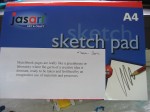

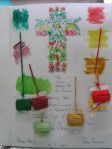
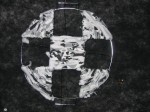

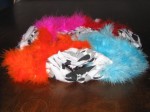
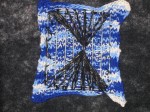
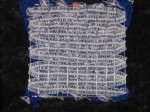

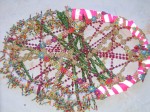
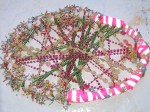
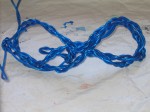
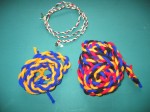






















You must be logged in to post a comment.